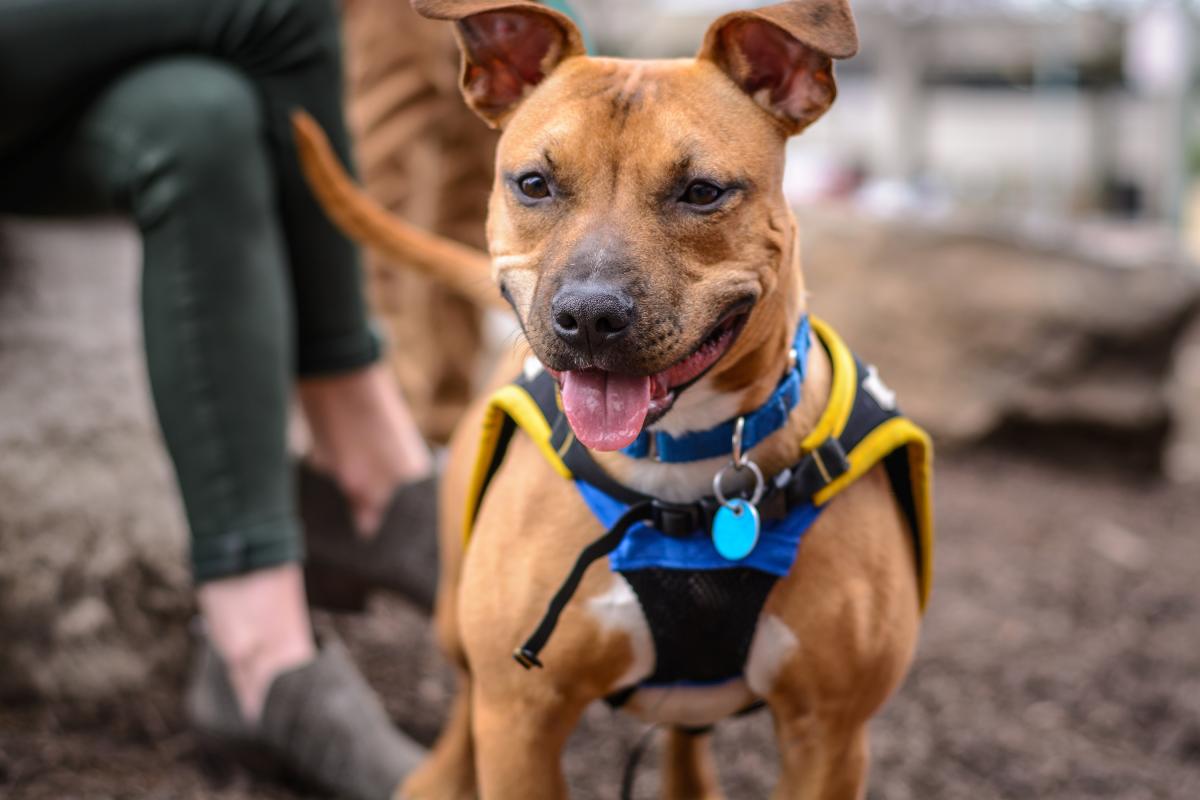I’m often asked about how to get the best out of creative teams when working on design and visual identity projects. In this post, I share my top 10 tips to help harness the power of ‘brand-led design’, based on my 30+ years of working in and with some of the world’s leading design agencies.
1. Start with an inspiring brief
‘Give me the freedom of a tightly defined brief’, attributed to David Ogilvy, is certainly a truism appreciated by creatives. In contrast, rambling emails and telephone conversations tend to produce scattergun responses.
Formats vary, but an effective brief should cover: Brand & Business Ambition; Objectives and Role of Design; Market and Audience; Deliverables; Key Insights on Brand, Consumer, Competitors & Culture; Timescales and Budget. Write a brand brief, not a bland brief (see below) by avoiding ‘fat’ words that are open to interpretation, such as ‘premium’, ‘crafted’ and the plain lazy ‘just add some innocent-style copy’.
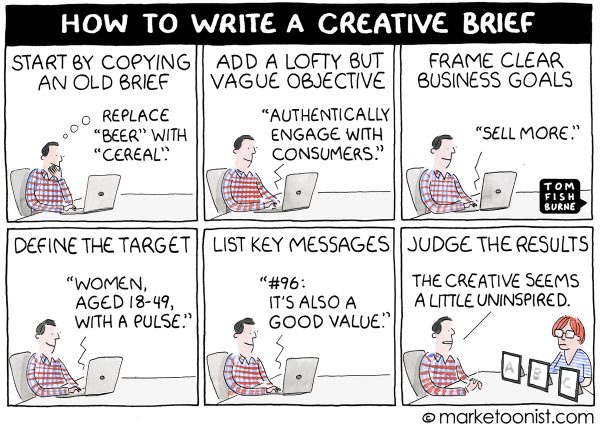
2. Choose your design partners carefully, and brief them in person
Finding the right agency for your specific challenge requires careful thought. You can consult professional bodies such as the DBA, read magazines like The Drum and ask friends and colleagues for trusted recommendations. You could consider alternatives to a ‘full-service’ design agency. In today’s virtual world, you can create a bespoke team of top-notch independent specialists, who can work at speed and often lower cost (an approach we’re exploring with an offer called brandgym create).
Once you’ve narrowed down to a shortlist, follow your written brief with a face-to-face briefing to immerse the designers in your business and brand. You can get to know each other, share ideas and test the ‘chemistry’ of a future working relationship. Be clear about what you want as a response and if you’re asking for creative work, I suggest pay for it. A free ‘try-before-you-buy’ creative pitch is NEVER a motivating way to start a business relationship!
3. Motivate your creatives
Confident and successful clients treat their designers like trusted ‘partners’ rather than remote ‘suppliers’. This can start with an initial workshop to share research, immerse creatives in your brand, and collaborate on initial ideas. A ‘consumer safari’ with your design team can deepen brand understanding and experience your consumer’s brand journey as much as possible together. Visit several supermarkets for an FMCG brand, for example, or visit your retail outlets and those of your competitors for a service brand.
4. Scope and understand design codes
When developing new creative work, designers and clients must understand fully the specific categories and markets into which the new designs will perform and compete. One useful and inspiring creative planning tool is to explore a category’s residual, dominant and emergent design codes and map these over time – see below for an example in the UK cereal bars category.
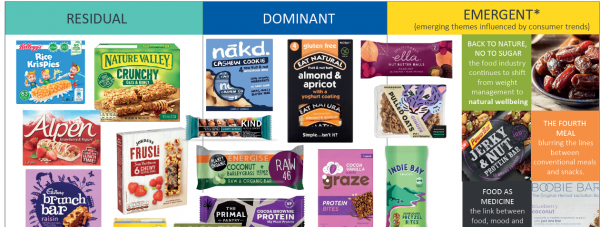
5. Measure and treasure your brand assets
We recommend sourcing robust data on your brand assets. On brandgym projects we use a research method called ‘Iconic Asset Tracking’ (IcAT) that taps into the ‘system 1’ intuitive thinking people use when making decisions. We recommend identifying the assets to truly ‘treasure’ and Keep, those to Update, equites you need to Add and those you can afford to Lose: summarised as ‘KULA’. The example below on Ben & Jerry’s shows how the brand’s ‘cows’ are key equities; these have been used as the brand has stretched into new categories.
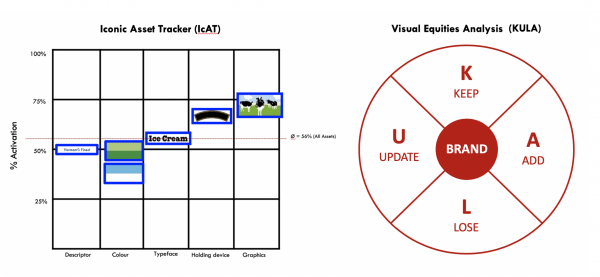
6. Visualise your brand strategy
‘Design is intelligence made visual’ to quote author, Alina Wheeler: creative planning in design is critical to bring your strategy alive visually, with a combination of images, colours, words, textures, sounds and forms.
I was lucky enough to work with the legendary Mary Lewis of Lewis Moberly, who was a master in the art of creative planning. She would start with a written one pager, capturing the brand’s essence and how she wanted the team to bring it alive visually. In some cases, her initial copy even became the final design solution, as for Waitrose iconic Cook’s Ingredients range (below).
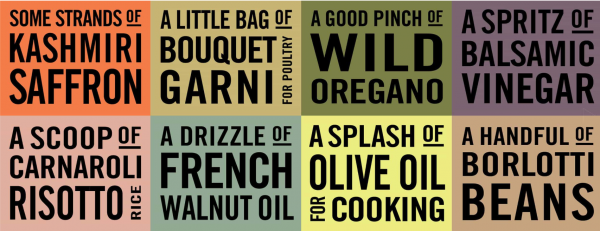
7. Respect method AND madness
Creatives approach briefs in a variety of different ways and ‘method’ and ‘madness’ both have their place. Some creatives are highly analytical, poring over consumer research, auditing the category and producing logical brand architectures …. others are true ‘right brain’ creatives, wonderfully unhinged, who excitedly develop a host of weird and wild ideas.
8. Be constructive with your criticism
Providing feedback to creatives is extremely difficult. Designers don’t just like their work – they love it; it’s part of them. To create, share and defend an idea ‘in public’ takes bravery, and renders the creative vulnerable, so a degree of sensitivity when feeding back is both advisable and helpful:
– Actively listen to your creative director, and value their experience
– Ensure you understand the designer’s rationale behind each idea
– Praise first (‘I like…’), and critique second (‘How to…?’)
– Ask questions before jumping to conclusions
– Disregard your personal taste (to a point), think of your target audience
9. Utilise research intelligently
Avoid using research like a drunk uses a lamp-post: for support, not illumination! Use research early in the design process to explore brand assets, as described above, not just to evaluate creative later. And be clear in what you measure, focusing on ‘system 1’ metrics that reflect real-life shopping, such as speed of recognition, rather than ‘beauty contest’ questions such as ‘Pack appeal’ or ‘Likes and dislikes’.
10. Invest properly in design
Investing time and money in design can pay back handsomely, as shown by results from the McKinsey Design Index. Top-quartile performers in design produced higher revenues (+32 %pts) and total shareholders returns (+56 %pts) versus industry counterparts over a five-year period (1). The study covered medical technology, consumer goods and retail banking, showing that good design delivers whatever your industry.
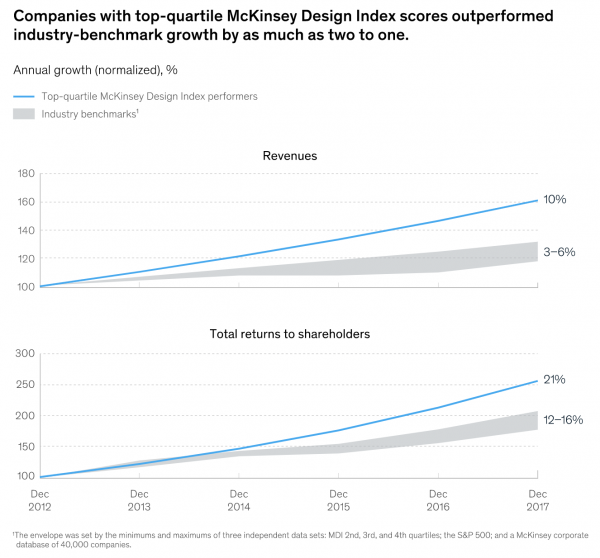
In conclusion, having worked as both a client commissioning design and an MD of design agencies, I believe wholeheartedly in the power of design to help companies achieve their brand and businesses ambitions. I hope the above article will help you harness brand-led design more effectively for your business.
Post by Simon Gore, Managing Partner and brandgym’s head of Naming & Visual Identity.
